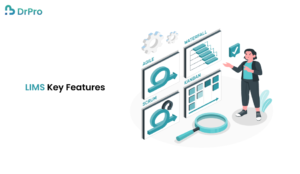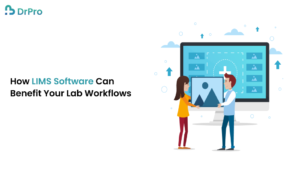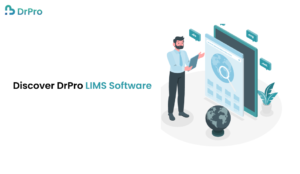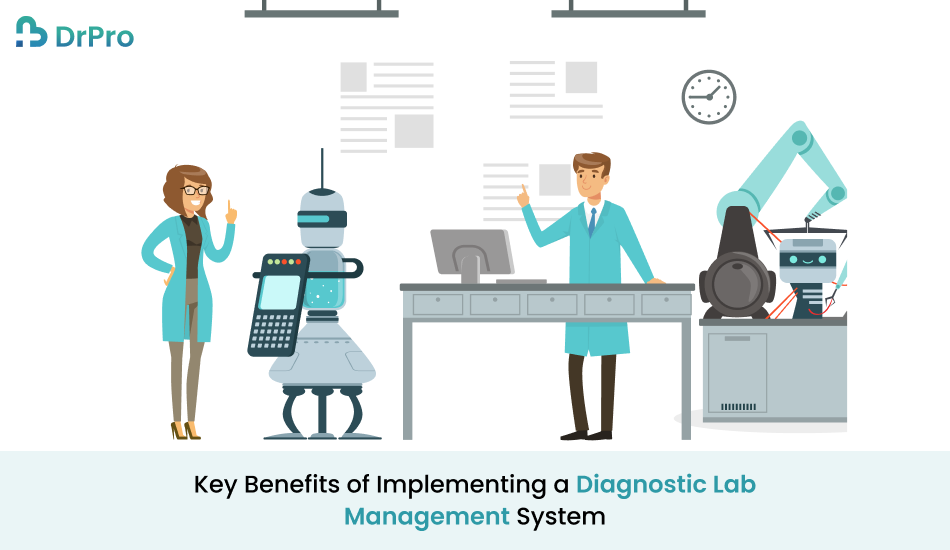Diagnostic laboratories have contributed significantly to the fast-moving settings of current healthcare delivery systems by providing accurate test results in a short time. However, managing a diagnostic lab is not an easy task whether occasioned by large patient samples, numerous tests, and compliance with strict regulatory frameworks. This is where a Diagnostic Lab Management System (LIMS) can be a real game changer.
A LIMS is a software application that is used to organize and improve operations in a diagnostic lab management system for sample testing. LIMS systems can also bring efficiency, and accuracy, increase data safety, and provide other decision-supporting values derived from improving and/or automating existing or new workflows.
In this article, the author will look at the features of the Diagnostic Lab Management System, the advantages of the system, and how it can benefit your lab.
LIMS Key Features

A good LIMS system should provide many features that can greatly improve the functionality of the diagnostic laboratories. These features include:
Sample Tracking:
LIMS provides for tracking of all the samples from the time of collection to analysis. Each sample is labeled with a bar code number or ID to ease monitoring of its status by the lab staff to reduce cases of sample loss.
Test Management:
LIMS systems can make test scheduling and reporting automated processes; thus minimizing the time spent and human interference. It can also manage the body regarding intricate workflows and multiple testing services, including general profiles, biochemical profiles, microbiology, hematology, coagulation, and immunology.
Data Management and Storage:
LIMS system consolidates the location of all patient and test information into a secure, easy-to-access, and retrieve database for use by the clinical laboratory personnel. This makes work easier since there is no need to produce paper-based records and ensures that there are little or no inconsistencies.
Quality Control and Compliance:
LIMS system can be built to track QC and assure compliance with numerous standards such as ISO 15189 or CLIA. It can detect any problem with test accuracy or process that does not conform to standards to ensure that all results are perfect.
Integration with Other Systems:
LIMS may also enhance and synchronize data interchange with other healthcare platforms that include EHR or HIMS.
Reporting and Analytics:
LIMS also possesses the ability to organize and aggregate powerful reports and the tests done by the labs. The data can be used to analyze trends, efficiency in the workflow, and strategic decision-making.
Advantages of a LIMS System
Implementing a LIMS system solution offers numerous advantages for diagnostic labs, including:
Improved Efficiency:
Among the many advantages of the LIMS system, it is necessary to identify the additional value in the organization of the automation of key processes, including logging samples, scheduling tests, and submitting results. This saves so much time used to do administrative work so that lab technicians can do other crucial parts of their work.
For instance, a lab technician is not required to key into a spreadsheet, basic information about a patient,t or other details of a particular test. However, in LIMS, you have an option of completing the fields for you as you type eliminating instances of mistakes and time that would be used. This becomes useful in a health care facility as results from tests can be produced within a short duration of time.
Enhanced Data Accuracy:
In a LIMS system, the chances of making mistakes are greatly reduced. By using keys and paperwork, data is often typed wrong, the handwriting is sloppy, or the file is lost. LIMS consolidates data to maintain patients’ and tests’ relevant data consistent and coherent in the common database. For example, an ordering doctor who wants lab results can be assured that the results are derived from accurate and error-free data, enhancing clinical decisions.CLIA. It can flag any issues with test accuracy or process deviations, ensuring that results meet the highest standards.
Integration with Other Systems:
LIMS can integrate with other healthcare systems, such as Electronic Health Records (EHR) or Hospital Information Management Systems (HIMS), for seamless data exchange and improved coordination between labs and healthcare providers.
Reporting and Analytics:
LIMS provides powerful reporting tools that allow labs to generate detailed reports, analyze test results, and track performance metrics. This data can be used to identify trends, optimize workflows, and improve decision-making.
time.
Disadvantages of LIMS Software
While LIMS offers many benefits, there are also some potential disadvantages to consider:
Implementation Costs:
The initial cost of implementing a LIMS can be significant, particularly for smaller labs or clinics with limited budgets. The cost of software, hardware, and training may be a barrier to adoption for some organizations.
Complexity:
One of the key drawbacks of LIMS systems is that they can be very difficult to install and customize, particularly in bespoke laboratories. There may also be a need to tailor the system to suit a particular lab which may be time-consuming.
Staff Training:
A LIMS system takes time, staff, and effort to be trained on how to use the software in the best way possible. Conducted research shows that most LIMS platforms are rather easy to use but at the same time, the confrontation with this kind of system may remain challenging for some employees, who have limited experience in working with IT solutions.
Dependence on Technology:
LIMS is an organization-dependent solution, therefore, any problem with the servers on which LIMS is housed, or with the software that runs the LIMS system can be a major problem in the lab. Thus, it is important constantly to monitor the sites’ performance and have a great IT support team to avoid frequent site downtimes.
Benefits of a Highly Configurable LIMS System
Designed LIMS have to be highly configurable and flexible because this type is rather more valuable compared to the traditional boring off-the-shelf LIMS. These benefits include:
Tailored to Your Lab’s Needs:
Opinions A flexible LIMS can be adapted to the operational structure of your laboratory to accommodate its existing processes and the tasks it is assigned. A configurable system also helps in the case where you require tracking different kinds of samples or when you wish to have the special report generated.
Flexibility:
You may find that as your lab grows, so does the need for some or all of the above which are important for the development of an efficient lab. Flexible LIMS necessarily imply the capability to expand the matrix without impacting the core functional workflows. This flexibility allows your LIMS to be a business solution and to change with your business.
Improved User Experience:
Customizing the system to the workings of the lab may enhance the user experience, hence the lab staff can work more smoothly with the system. This in turn ensures that more users take to the system to avoid making more mistakes on it.
How LIMS Software Can Benefit Your Lab Workflows

Implementing a LIMS system can streamline various aspects of your lab’s workflows, including:
Sample Collection and Tracking:
LIMS system makes sample management automatic, thereby allowing each sample to be labeled and entered into the system at the time it was taken. This helps in avoiding confusion on the samples collected and also makes proper identification of samples that need to be processed.
Test Processing and Reporting:
With the help of LIMS, issues of test scheduling are solved automatically, and there can be no delays or failure to perform the necessary tests. As soon as the tests are performed, LIMS then can generate the reports and distribute them to relevant hospitals or patients.
Inventory Management:
LIMS can monitor usage or stock up on the reagents, chemicals, or other materials used in the laboratory. It can tell the lab staff when stocks of some of the supplies utilized in the testing processes are running low hence can help avoid occasions whereby tests are delayed due to lack of supplies.
Quality Control:
Laboratory Information Management System helps labs keep track of quality control and see to it that the laboratory’s tests are standards-compliant. It can notify concerned staff, if it discovers any problem in the process, so that any encountered problem should be dealt with promptly.
Discover DrPro LIMS Software

This system is also very flexible and can be designed to fit the requirements of almost any diagnostic laboratory that uses DrPro’s LIMS software. Capabilities like sample tracking, test management, and reporting make DrPro’s LIMS appropriate to fit the lab environment constantly delivering reliable information and one that is compliant with regulations. From the small laboratory to the complex diagnostics center, DrPro’s LIMS will meet the needs of its clients and assist in offering the best patient care.
Conclusion
There are considerable advantages in setting up a Diagnostic Lab Management System or a LIMS for the organization’s laboratory. From effective handling of the flow of work and data accuracy to compliance and communication, LIMS systems offer a particularly effective tool for handling processes within diagnostic laboratories. When considering IIPM there are a few implementation issues that can be problematic, for example, costs involved in implementing the model and training and sensitisation of staff; the gains on the other hand are immense.
The role of a LIMS in the current complexities and growing challenges of healthcare cannot be underestimated, and as the healthcare industry grows, so will the need for a strong LIMS system to maintain the facility’s competitiveness, patients’ benefit, and business success.
FAQs
Q1. Can LIMS systems integrate with other healthcare systems?
Yes, LIMS systems can integrate with other systems such as Electronic Health Records (EHR), Hospital Information Management Systems (HIMS), and billing systems to ensure seamless data exchange and coordination between different departments.
Q2. How do LIMS systems help with compliance?
LIMS systems help labs stay compliant with various industry standards and regulations, such as ISO 15189 and CLIA, by tracking quality control processes, generating audit trails, and producing necessary compliance reports automatically.
Q3. What kind of support and training is required for LIMS Systems?
Most LIMS providers, including DrPro, offer training for lab staff and ongoing technical support. While LIMS systems are user-friendly, proper training is essential to ensure smooth implementation and usage.
Q4. Is LIMS suitable for all types of labs?
Yes, LIMS systems are highly adaptable and can be used in various types of labs, including diagnostic, research, and clinical labs. It can be customized to suit specific workflows and testing requirements.
Q5. How long does it take to implement LIMS systems?
The timeline for LIMS systems implementation depends on the size and complexity of the lab, as well as the level of customization needed. On average, implementation can take anywhere from a few weeks to a few months.


